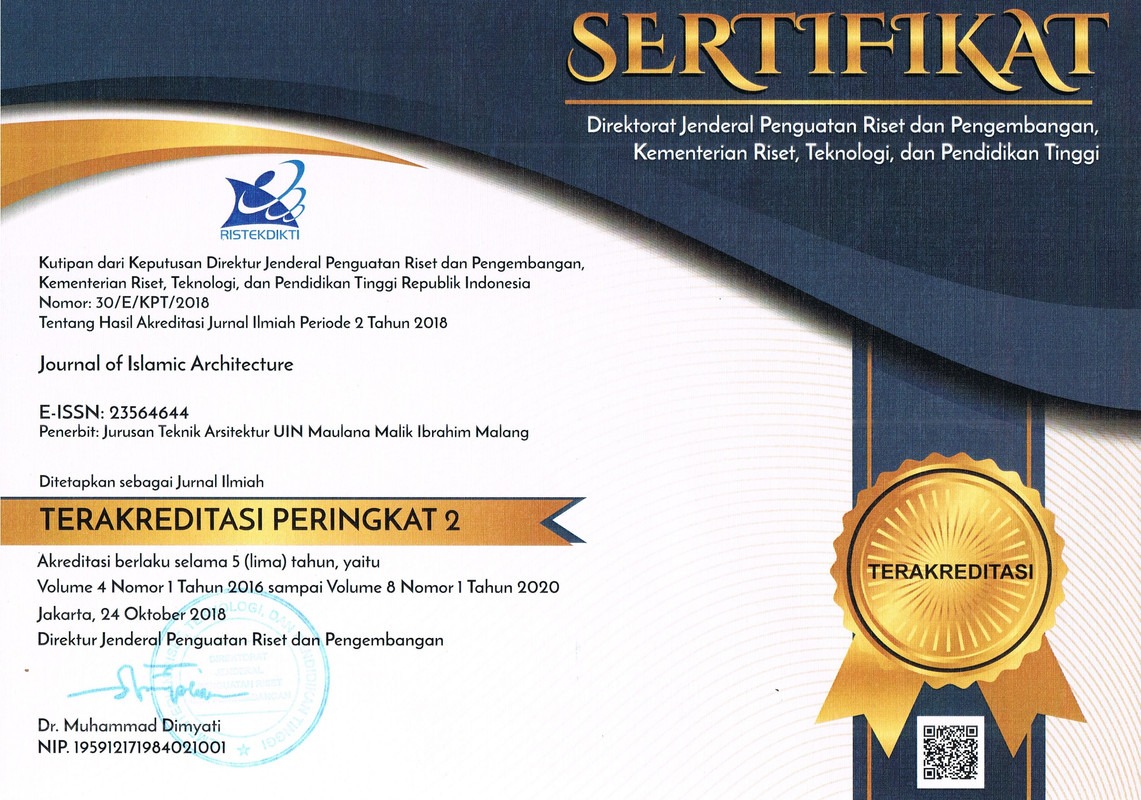Tunis’s New Mosques Constructed Between 1975 and 1995: Morphological Knowledge
Abstract
Keywords
Full Text:
PDFReferences
U. Vogt-Göknil, Mosquées : Grands Courants de L'architecture Islamique, Paris, Le chêne, 1975.
L.Golvin, La mosquée: ses origines, sa morphologie, ses diverses fonctions, son rôle dans la vie. Alger : Institut d'études supérieures islamiques d'Alger , 1960
G.Marçais, L’art Musulman, Paris 1962
G. Michell, Architecture of the Islamic World: Its Hisotry and Social Meaning. Thames and Hudson, Londres, 1978.
T. Burckardt, L’art de l’Islam, langage et signification, Sindbad, Paris, 1985.
Serageldin, J. Steele, Architecture of the Contemporary Mosque, Academy Editions, Londre,1996
Cetin, Murat, “Back to Future; Essence of Mosque Design and a New Generic Architectural Typology”, in Lonaard Magazine . May2011, Vol. 1 Issue 3, pp65-57.
P.Sebag, Great Mosque of Kairouan, Macmillan, New York, 1965
A. Lézine, Sousse : Les Monuments Musulmans, Cères productions, Tunis, 1968
G. Marçais et L.Golvain, La Grande Mosquée de Sfax, Imprimerie La Rapide, Tunis, 1960
Ben Mami, M.B., “La Mosquée Mohamed Bey, un Exemple de la Présence Architecturale et Artistique Ottomane dans la Médina de Tunis”,Africa, Série A.T.P., n° 12, pp. 1-22.
I. Cherif, Mosque of Tunis Gouvernorate Constructed Between 1975 and 1995: Morphological Knowledge and Modeling, unpublished Master’s Thesis in Architecture supervised by Najla Allani Bouhoula, National School of Architecture and Urbanism, 2013.
B. Duprat, Morphologie Appliquée: l’analyse des Conformations Architecturales, ses Problèmes, ses Principes, ses Méthodes, HDR, LyonIII: Université jean moulin, Faculté de philosophie, 1999.
DOI: https://doi.org/10.18860/jia.v3i3.2743
Refbacks
- There are currently no refbacks.






